When interesting questions are asked!
After several years of adding data to the database (not full time!) we are writing a large series of queries based on questions formulated by team members. Now gradually the potential of the database becomes visible, especially when combining evidence from various parts of the database. We started, of course by asking very basic questions such as those which allow an assessment of the quality of the database and the quality of the data. A simple question is to show the recorded cemetery sites according to the number of graves excavated/recorded. This results in the map below. In spite of the flaws inherent in the cemetery data (incomplete cemeteries, many ‘unknown’) this allows a first analysis of the distribution of the population over Northern Gaul. We will do this in relation to landscape characteristics, the remaining Roman infrastructure, the presence of rivers etc.
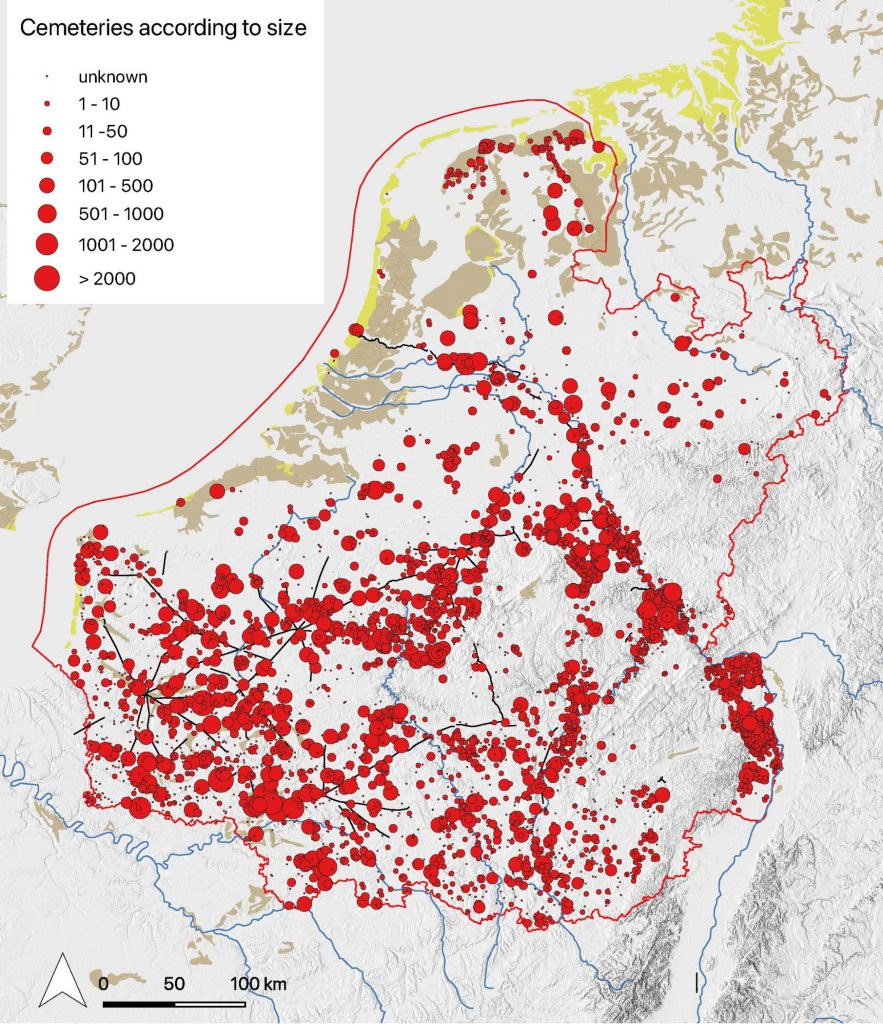
The quality of the data
The database also allows to analyse the quality of the data. This varies considerably over the research area and we have to consider this constantly when interpreting distribution maps. Merovingian cemeteries have been discovered already from before AD 1800 especially in France and in areas where stone sarcophagi and stone built graves were discovered while reclaiming land or ploughing fields. Cemeteries discovered in the 19th century were usually ‘explored’ rather than ‘excavated’. The goals of the exploration (adding to museum collections or providing the antiques market) will have determined to a large extent what was collected. The map below shows the cemeteries discovered before the First World War. Most of them were subject to exploration and limited documentation.
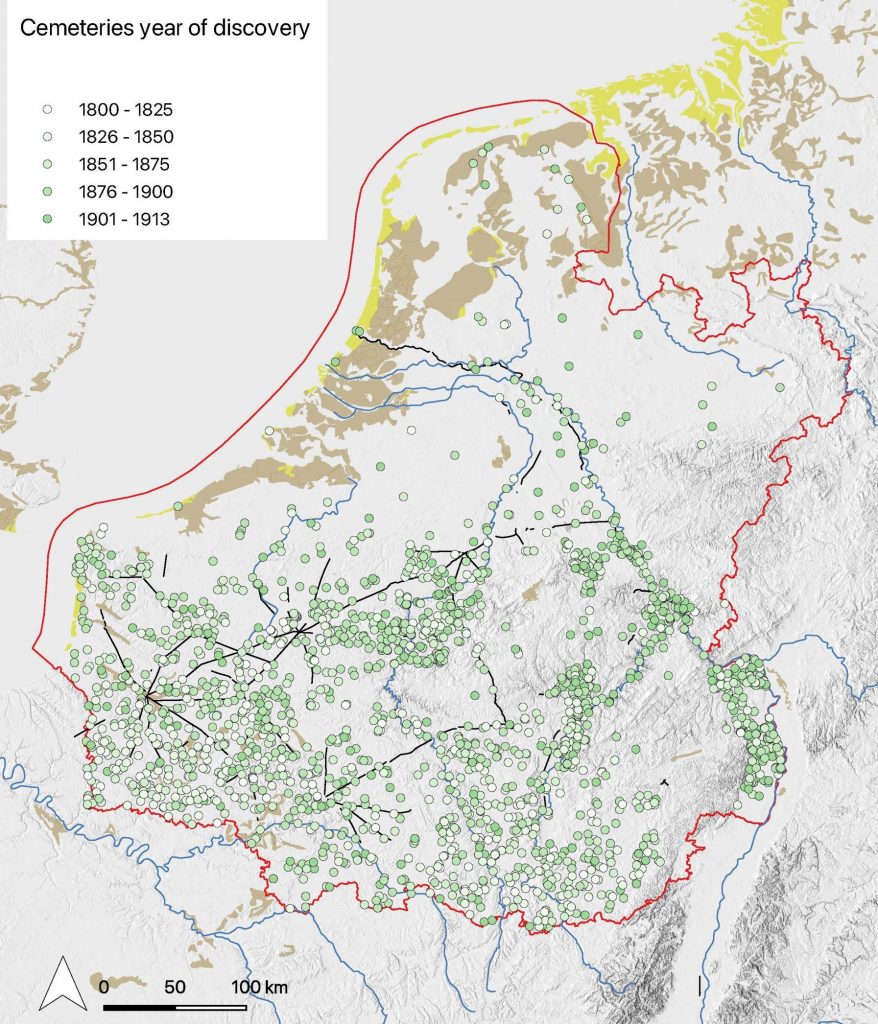
When one compares this image with the one of the distribution of cemeteries discovered only after 1980 that are larger than 100 graves, that is those which have been excavated (and published) in a modern way one can see how limited the availability of high quality data is.
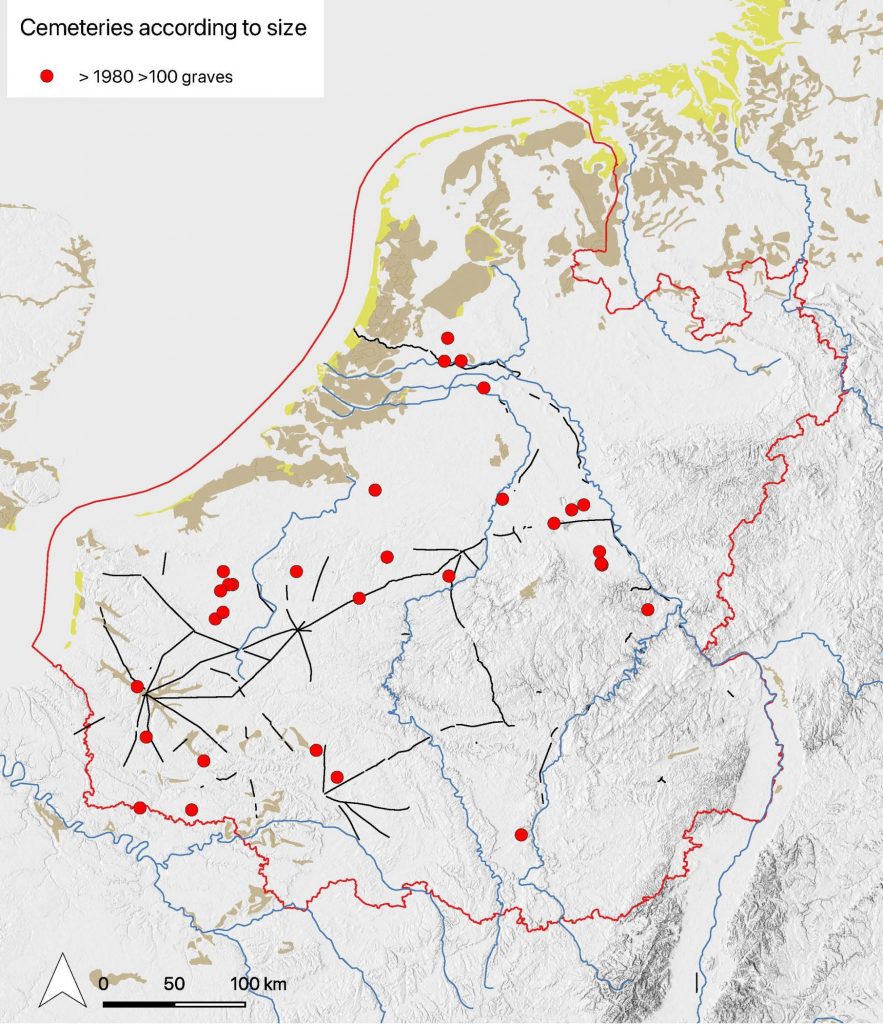
Rural settlements
The distribution of excavations of rural settlements shows also very interesting regional differences. Many excavations of Merovingian settlements, including large scale excavations took place in the Netherlands and France, much less in Belgium and Germany (the data for Westphalia are not yet up to date). This aspect has to be studied in greater detail for the evidence from France is often not easy to interpret. It is difficult to reconstruct houses and other buildings and date them to the Merovingian period in the southern part of the research area. That can be seen on the second map where the number of recorded houses is shown. It rather shows the state of research and the size of excavated areas than the actual presence of houses of course!
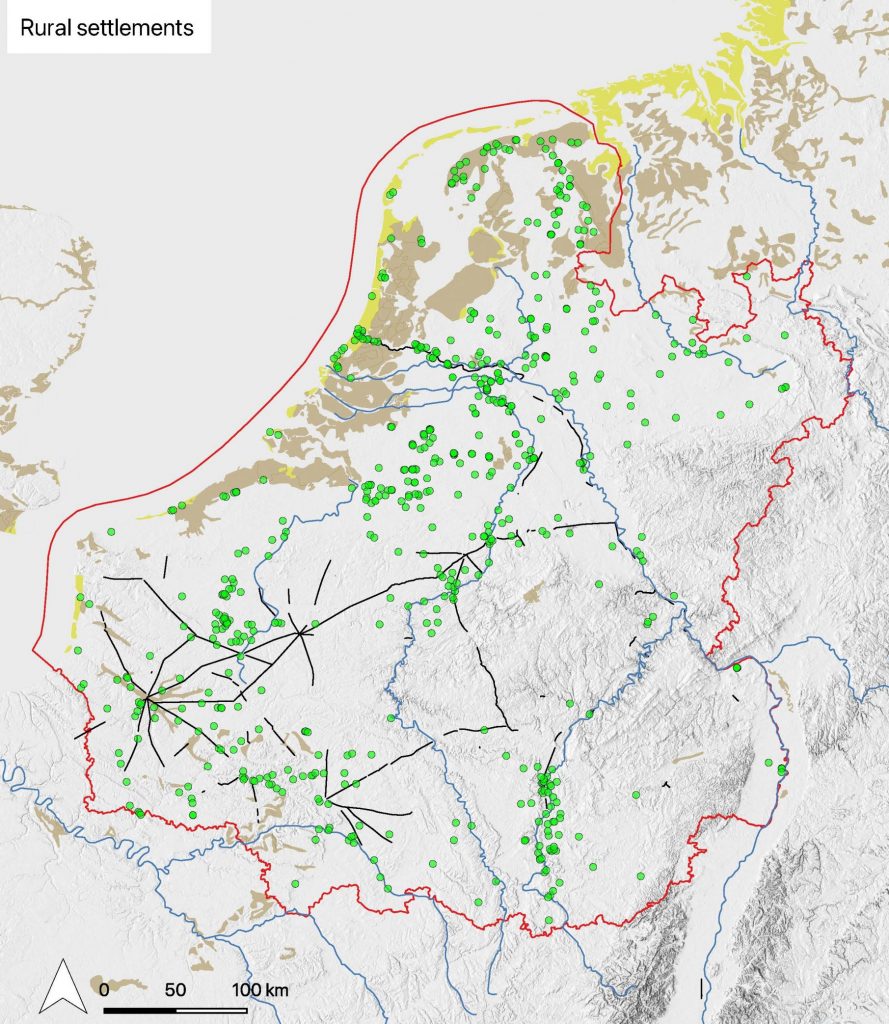
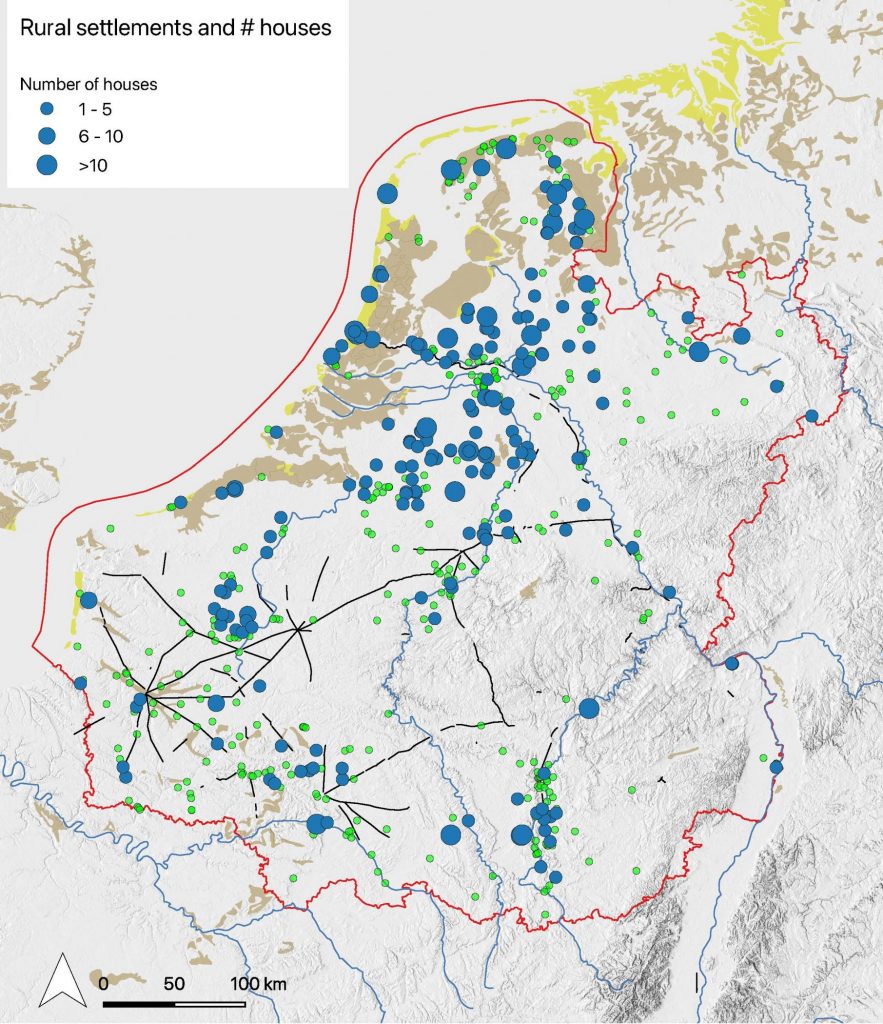
These are just a few (very basic) examples of using the data in the Rural Riches database. We are experimenting with more complicated questions regarding the distribution of many types of beads as proxies for exchange systems, the relation with other types of finds (brooches), the impact of concentrations of populations on the availability of certain goods, the development of population, the relation of the distribution of certain goods and infrastructural elements such as Roman roads, towns and major rivers, etc. etc. These are all in fact traditional qualitative research objectives. The database allows to quantify the data in terms of absolute numbers and relative numbers. Some experiments with the quantitative distribution (of glass vessels for instance) shows that a relative distribution can be quite different from the absolute distribution of glass vessels.
What else?
These analyses on a macro-scale form only part of the total project objectives. Research of the burial rites, the organisation of food production, the organisation of craft production, the whereabouts of Merovingian kings and aristocrats and the presence of the ‘Church’ are other aspects that will be reported on in upcoming blogs.